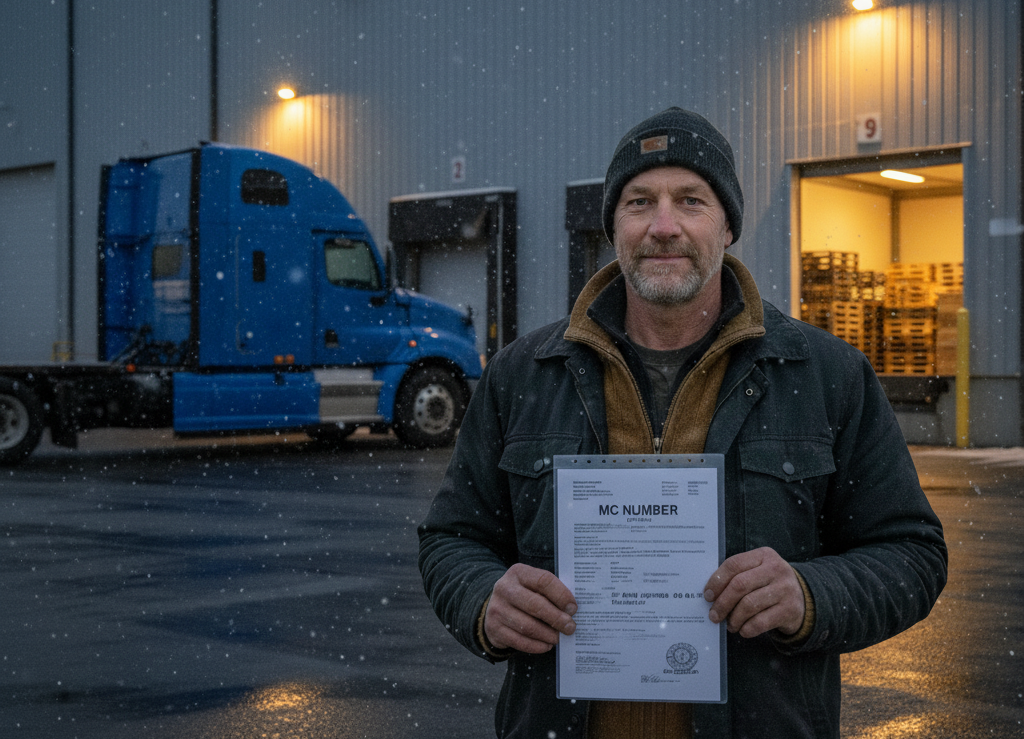What is DOT Compliance?
DOT compliance is adherence to the US Department of Transportation (DOT) rules. These standards ensure the safety of drivers and other traffic participants. DOT compliance is critical for businesses involved in commercial transportation, such as trucking companies.
Adherence to DOT rules involves several aspects, such as driver’s licenses, vehicle inspections, and proper documentation. failure to comply can lead to fines, penalties, or license suspension.
Thus, maintaining DOT compliance is vital for safe driving and essential to supporting legal and successful trucking operations.
Who Needs to Comply with DOT Regulations?
Being DOT compliant is necessary for businesses operating in the trucking sector. Companies or individuals operating commercial vehicles must adhere to these rules.
- Trucking companies. They must ensure all their fleets comply with the industry standards, such as proper driver qualification, adequate insurance coverage, and accurate documentation. This is especially needed for companies that operate in several states.
- Owner-operator truck drivers. Even independent truckers who operate their vehicles must adhere to the same DOT standards. For instance, it refers to proper qualification, adherence to the Hours of Service rules, undergoing medical examinations and drug and alcohol tests, and accurace record-keeping.
- Hazardous materials shippers. Businesses that handle dangerous cargo should adhere to additional requirements. In particular, drivers must have the necessary endorsements, and the vehicles should be properly equipped. These rules also include packaging, labeling, and additional documentation. All this aims to prevent potential accidents and damage.
- Fleet managers. They are essential to ensuring adherence to DOT requirements. Fleet managers implement and monitor safety measures, schedule vehicle inspections, and ensure driver compliance. Fleet managers help maintain safety and compliance within the company.
DOT compliance is a fundamental aspect of the trucking sector. It prevents disruptions of operations and reduces penalty risk.
Key Components of DOT Compliance
DOT compliance requirements cover several aspects that are crucial for legal trucking operations. These include drivers’ licenses and permits that comply with vehicle they operate and cargo they transport, regular vehicle maintenance and inspections, adherence to HOS rules, and accurate record-keeping. These all aim to promote safe and reliable transportation services.
Fleet Management
Fleet management is one of the DOT compliance aspects. Its effectiveness impacts all transportation operations of businesses, aligning them with industry requirements, reducing risks, and increasing overall efficiency.
Fleet management’s primary responsibility is maintaining truck safety and reliability. This includes developing a maintenance schedule that covers inspections and repair activities. The optimal truck condition prevents breakdowns, reduces accident risk, and minimizes downtime.
Fleet managers also ensure compliance with the hours of service rules. These regulations are designed to prevent driver exhaustion, the main factor in road accidents. Managers can use electronic logging devices (ELDs) to monitor driving hours and prevent exceeding the legal limits.
ELDs not only provide HOS compliance but also help optimize route planning and schedules. They allow to maximize efficiency while staying compliant. Fleet managers should balance timely deliveries with driver rest and vehicle maintenance requirements. In addition, effective route planning can reduce fuel consumption and vehicle wear and tear.
The other crucial aspect is record-keeping. Fleet managers maintain records of all fleet activities, such as maintenance logs, driver qualifications, and safety inspections. These records can be used for internal monitoring and DOT audits and inspections. Reliable documentation can protect a business in case of legal disputes.
Fleet managers must also conduct regular driver training. This can cover safety protocols, regulatory changes, and new trucking practices. Regular training ensures awareness of the latest regulations and safety strategies. In addition, fleet managers should provide specialized training for drivers involved in shipping hazardous or oversize cargo.
Driver Compliance
The other essential aspect of DOT rules is driver compliance. A valid Commercial Driver’s License (CDL) is the basis of drivers’ adherence to DOT rules. Their obtaining requires passing written and practical tests to verify knowledge and operating commercial vehicle skills. Sometimes, additional licenses and permits are necessary. This covers the transportation of oversize or hazardous items.
Adherence to the Hours of Service rules is the next crucial aspect. These rules limit the number of driving hours and set necessary rest periods to prevent driver fatigue. Drivers can use ELDs to monitor their driving time. These devices can also warn drivers when they exceed legal driving limits.
Commercial drivers must also undergo medical examinations that verify their ability to drive. This includes checking for vision or hearing problems, cardio issues, or sleep disorders. Medical testing also includes drug and alcohol testing. The DOT requires conducting such tests pre-employment, randomly, and post-accident. Positive results can lead to disqualification from driving duties.
Driver compliance also involves maintaining proper record-keeping. This covers pre-trip and post-trip truck inspections, load securement checks, and incident reports. These records are crucial for transparency and adherence to DOT requirements.
Truck drivers must undergo regular training and courses. With it, they can keep themselves informed on requirement updates and new safety practices. Continuous learning ensures drivers are well-prepared for any potential issues on the road.

DOT Compliance Services and Tools
Maintaining DOT compliance can be challenging because of the complexity of ever-evolving federal regulations. Businesses can consider specialized tools and services that simplify this process. With these resources, companies can focus on their main tasks and operations.
DOT Compliance Services
DOT compliance services can be provided by third-party companies that specialize in adherence to federal regulations. The main benefit of leveraging DOT compliance services is outsourcing related tasks. As for driver compliance, 3PL companies manage driver qualification files, including licenses, permits, medical clearance, and drug and alcohol testing. Management helps avoid potential violations that can lead to fines or license suspension.
In addition, these services often include monitoring HOS compliance. Compliance providers use electronic logging devices to obtain data on each trucker’s driving hours and intervene when the legal limit is approaching.
The other essential task is vehicle maintenance trucking. Regular inspections are necessary to ensure a truck is fit for the road and complies with DOT safety standards.
DOT compliance services may also include ongoing education and training programs for drivers and managers. Such programs keep personnel informed on the latest changes in the standards and their responsibilities.
QuickStart offers personalized solutions that meet your business’s needs and requirements. Whether you’re an owner-operator, one-man company, or fleet manager, we’ll ensure your compliance.
Compliance Checklists and Audits
Checklists and audits can be essential tools for maintaining DOT compliance. They help ensure all related tasks are completed on time and all potential issues are identified and addressed.
Compliance checklists ensure a structured approach to managing DOT compliance tasks. They can be personalized to the specific needs of a business, covering issues such as vehicle inspections or HOS compliance documentation. Working with these checklists ensures all tasks are completed, reducing non-compliance risk.
Audits are a more comprehensive method conducted by the company or a third-party auditor. Usually, DOT compliance audits involve reviewing all operations, including driver qualification, HOS records, and vehicle maintenance. Their main purpose is to identify potential weak points that can lead to non-compliance.
Identifying and addressing such issues reduces the risk of fines, penalties, and operational disruptions. Audits also provide an opportunity to improve the compliance procedures.
Management Systems
Systems for DOT compliance are designed to automate various tasks. They provide a centralized platform for tracking, managing, and documenting all necessary activities. This approach simplifies the organization and conducting of regulations adherence.
The main feature of these programs is the ability to track all related documents, including driver records, medical examinations, and vehicle maintenance. The system can alert when a license nears expiration or when a medical exam is due. It ensures all renewals are completed on time.
These systems can also generate reminders for vehicle maintenance schedules. This can cover inspections, oil changes, brake checks, and other tasks. Keeping all maintenance records in one place simplifies the audit process and reduces hassle.
Another critical option for management compliance systems is tracking Hours of Service compliance. The systems integrate with ELDs to record driving hours and alert in case of limit exceeding.
The systems also generate compliance reports with just a few clicks. Such reports an be used for internal audits or during DOT inspections.
Common DOT Violations and How To Avoid Them
DOT violations can lead to fines, penalties, and even disqualifications. Understanding the common mistakes can help implement necessary measures to reduce non-compliance risk. We provide some of the most frequent violations and ways to prevent them.
- Hours of service violations. It can occur when drivers exceed the legal limit of driving hours. Using ELDs can monitor driving hours. These data help identify potential violations before they occur.
- Vehicle maintenance violations. This involves truck safety defects, such as broken lights or worn tires. Set a maintenance schedule of inspections and repairs and keep detailed records of all activities.
- Drug and alcohol testing violations. This aspect of non-compliance involves failing to conduct required tests or not proper procedures. You must ensure all tests are conducted and documented as required. Use compliance services or management systems to schedule and track testing activities.
- Documentation errors. Inaccurate or incomplete documentation can refer to missing driver logs or incomplete inspection reports. Implement strict protocols to ensure all necessary records are accurate and complete. Don’t forget to audit documentation to correct potential errors regularly. You can also consider using electronic systems to automate the process.
Preparing for DOT Audit
A DOT audit can be a nervous process that requires careful preparation and planning. However, the right strategies can simplify it. The key is to ensure your records, processes, and vehicles comply with the industry requirements.
- Review compliance records. Check your compliance records, such as vehicle maintenance logs, driver qualification, and medical examinations. Make sure all necessary documents are updated and easily accessible.
- Conduct a pre-inspection audit. The efficient preparation method is to conduct a mock audit. It provides a clear understanding of potential non-compliance areas in your business. Mock audits can be conducted internally or by an external consultant.
- Check your vehicles. Ensure your fleet complies with DOT requirements. Any defects should be addressed immediately.
- Know the frequent violations, and be aware of the most common violations. It can help focus your preparation and ensure adherence to potentially weak areas.
- Stay calm. On the day of the audit, stay calm. Ensure all documents are up-to-date and that your vehicles and drivers are prepared.

The Role of Technology in DOT Compliance
Technology can be essential in ensuring DOT compliance for trucking businesses. Technological solutions can offer precise record-keeping and minimize the risk of human errors. Here are some options on how technology can simplify the DOT safety compliance process.
- Electronic Logging Devices (ELDs) help track hours of service compliance. They record driving time and monitor engine data. ELDs can also prevent violations by alerting drivers when they approach driving limits.
- Fleet management software. Reliable software can centralize all aspects needed for compliance. These platforms allow for maintaining and storing necessary records and monitoring performance in real time. Having all documentation in one place also simplifies the audit process.
- Automated compliance reporting. Such programs can generate accurate and timely compliance reports. Automation tools can compile reports on vehicle inspections or driver testing with a few clicks, saving time and reducing error risk.
- GPS tracking. GPS systems provide real-time data on location, speed, and driving behavior. It can help enforce safe driving practices and identify potential violations.
- Predictive analytics. Such programs can be used to anticipate potential issues. Analysis of data and current trends helps identify patterns that may lead to problems in the future, such as maintenance needs or driving behavior issues.
Conclusion
DOT compliance refers not only to a regulatory obligation but also to an essential aspect of safe and reliable trucking operations. If you understand what DOT compliance is and implement the right steps, you can protect your business from legal penalties or reputation damage. Proactiveness is key to ensuring DOT compliance requirements. Identifying and preventing potential issues before they arise ensures stable operations and smooth audits.
DOT safety compliance is an ongoing process. Trucking sector participants should stay informed about new regulations and current trends. Knowing how to be DOT compliant helps you avoid penalties and increases your success.
With the guidelines in this article, you’ll be well-prepared to handle audits, avoid common errors, and maintain safety and reliable transportation.




